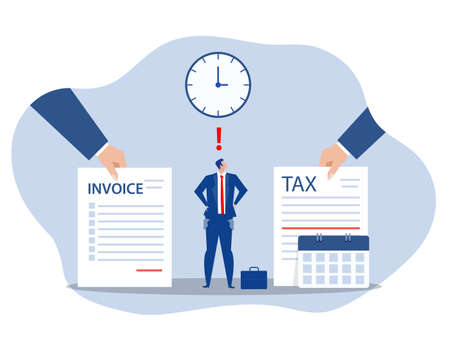1. Introduction: The Insurance Protection Gap in the United States
Many Americans face significant challenges when it comes to accessing adequate insurance coverage. Despite the U.S. having one of the largest insurance markets in the world, millions remain uninsured or underinsured, leaving them vulnerable to unexpected financial hardships. This issue is commonly known as the “protection gap,” which refers to the difference between the insurance people need and what they actually have.
Understanding the Protection Gap
The protection gap is not just a matter of numbers—its about real people and communities who are left exposed to risks. These gaps can be found across different types of insurance, including health, life, property, and disability coverage.
Who Are the Underserved Populations?
| Group | Common Barriers | Impact of Protection Gap |
|---|---|---|
| Low-income families | Cost of premiums, lack of employer benefits | Financial vulnerability during emergencies |
| Rural communities | Limited provider networks, fewer agents | Difficulty accessing personalized coverage options |
| Minority groups | Language barriers, lack of trust, discrimination | Inequitable access to essential insurance products |
| Young adults | Lack of awareness, perception that insurance isnt needed | Gaps in health and life insurance during key life stages |
| Gig economy workers | No employer-sponsored plans, fluctuating income | No safety net for illness or injury |
The Growing Importance of Closing Protection Gaps
The COVID-19 pandemic and recent natural disasters have highlighted how crucial it is for everyone to have reliable insurance coverage. More than ever, underserved populations are facing heightened risks without proper protection. As technology evolves, there is growing interest in how innovations like artificial intelligence (AI) can help bridge these gaps by making insurance more accessible and affordable for all Americans.
2. How AI Is Transforming Insurance Accessibility
AI-Driven Tools: Simplifying the Insurance Journey
In the past, buying insurance in the United States often meant filling out piles of paperwork or sitting through long phone calls with agents. Today, thanks to artificial intelligence (AI), the process is much easier and faster. AI-powered chatbots and virtual assistants are now available 24/7 to answer questions, explain coverage options, and even help you get a quote instantly. These digital helpers make insurance less intimidating, especially for first-time buyers or those with limited financial knowledge.
Personalized Products for Diverse Needs
AI technology can analyze huge amounts of data—like your driving habits, health records, or small business risks—to tailor insurance products just for you. For example, some car insurers use AI to track driving behavior through smartphone apps and offer discounts to safe drivers. This personalization helps people and small businesses find coverage that fits their unique situations without paying for what they dont need.
Examples of Personalized AI Insurance Solutions
| Type of Insurance | How AI Personalizes It | Benefit to Customer |
|---|---|---|
| Auto Insurance | Monitors driving habits via app | Lowers rates for safe drivers |
| Health Insurance | Analyzes health data for custom plans | Makes premiums more affordable |
| Business Insurance | Assesses specific business risks using AI models | Offers targeted protection at better prices |
Reducing Barriers for Individuals and Small Businesses
One of the biggest barriers to getting insured in America has been high costs and complicated processes. AI changes this by automating repetitive tasks like claims processing and underwriting, which lowers administrative costs for insurance companies. As a result, savings can be passed on to customers through lower premiums or simpler application steps. For small business owners who are often short on time and resources, these streamlined systems make it much easier to protect their ventures without extra hassle.
Key Ways AI Breaks Down Barriers:
- Simplified Applications: Easy online forms powered by AI mean fewer documents and faster approvals.
- Faster Claims Processing: Automated systems handle claims quickly, so you get paid sooner when something goes wrong.
- Bilingual Support: Many AI tools offer services in multiple languages, reaching more people across diverse communities.
- No Physical Visits Needed: Everything from quotes to policy management can be done online—perfect for busy individuals or remote businesses.
This new wave of AI-driven solutions is making insurance more accessible than ever before, helping close protection gaps for underserved Americans and small businesses alike.

3. Enhancing Risk Assessment and Underwriting with AI
Artificial intelligence is changing the way insurance companies assess risk and make underwriting decisions. Traditionally, insurers have relied on a limited set of data points, such as age, medical history, or driving records, to decide whether to offer coverage and at what price. This approach often excluded people who didn’t fit into standard categories or had incomplete records.
How AI Makes Underwriting More Precise
With machine learning and advanced data analytics, insurers can now analyze much larger and more diverse sets of information. AI tools sort through electronic health records, wearable device data, social media activity (where permitted), and even non-traditional sources like payment histories or lifestyle habits. This means insurers can build a more complete and accurate picture of each person’s risk profile.
| Traditional Underwriting | AI-Powered Underwriting |
|---|---|
| Limited data (e.g., age, health history) | Diverse data (wearables, EHRs, lifestyle) |
| Manual risk assessment | Automated, real-time analysis |
| Generic pricing for groups | Personalized pricing for individuals |
| Slow approval process | Faster decisions, sometimes instant |
Fairness and Inclusion in Underwriting Decisions
One of the biggest benefits of using AI in underwriting is that it can reduce human bias. Machine learning models can be designed to focus only on relevant risk factors, ignoring things like race, gender, or zip code that could unfairly impact certain groups. This helps open up insurance access to people who were previously denied coverage or charged higher rates because they didn’t fit traditional molds.
Examples of Improved Access
- Gig workers: People with non-traditional work histories can now get fairer assessments based on actual income patterns rather than just job titles.
- Younger applicants: AI can analyze safe behaviors from apps or wearables to offer better rates even without long histories.
- People with chronic conditions: Instead of blanket exclusions, AI evaluates individual management and lifestyle improvements for more tailored options.
The result is a smarter, fairer insurance marketplace where more Americans—especially those who used to fall through the cracks—can find the protection they need.
4. Addressing Bias and Ethical Considerations
As artificial intelligence becomes more integrated into the insurance industry, it’s important to make sure AI tools are fair and ethical. In the past, some insurance decisions have reflected biases—sometimes unintentionally—based on historical data. For example, certain communities may have faced higher rates or limited access to coverage because of where they live or their demographic background. AI has the potential to fix these issues, but only if it is used responsibly.
Why Bias in AI Matters
If AI algorithms learn from historical data that contains bias, they might repeat those mistakes or even make them worse. This could mean some people still have trouble getting affordable insurance or adequate protection. That’s why insurance companies and tech experts are working hard to spot and correct any biases before launching new AI-powered products.
Efforts to Ensure Fairness and Transparency
Here are some ongoing efforts in the U.S. insurance industry to address these concerns:
| Effort | Description | How It Helps |
|---|---|---|
| Bias Audits | Regularly testing AI models for discriminatory outcomes | Keeps systems fair and helps build trust with customers |
| Explainable AI (XAI) | Creating models whose decisions can be understood by humans | Makes it easier for customers and regulators to see how decisions are made |
| Diverse Data Sources | Using a wide range of data to train AI—not just historical claims data | Reduces the risk that old patterns of inequality will be repeated |
| Ethical Review Boards | Bringing together experts to review and guide AI projects | Adds another layer of oversight and accountability |
| Regulatory Collaboration | Working with state and federal agencies on best practices for fairness | Ensures compliance with U.S. laws and protects consumers’ rights |
What This Means for Policyholders
The goal is for everyone—no matter their background—to have equal access to quality insurance products. By being proactive about bias and transparency, insurers can help close protection gaps and better serve diverse communities across America.
5. The Future Outlook: AIs Potential to Close the Protection Gap
Exploring New Opportunities with AI
Artificial intelligence is opening doors for insurance companies to reach more Americans than ever before. With smart algorithms, insurers can identify people who are currently uninsured or underinsured and offer them affordable coverage options tailored to their needs. This means that communities who have traditionally been left out of the insurance conversation—like gig workers, small business owners, and low-income families—can finally get the protection they deserve.
How AI Can Expand Insurance Access
| AI Application | Potential Benefits for Americans |
|---|---|
| Personalized Risk Assessment | More accurate pricing, making insurance more affordable and fair for everyone |
| Automated Claims Processing | Faster payouts and less paperwork, especially helpful during emergencies |
| Chatbots and Virtual Assistants | 24/7 support and guidance in plain language, improving customer experience |
| Fraud Detection Algorithms | Reducing fraudulent claims helps keep premiums lower for honest customers |
| Coverage Recommendations | Simplified decision-making so individuals can easily find policies that match their unique needs |
Potential Regulatory Developments Ahead
As AI becomes more important in the insurance world, regulators are starting to pay close attention. We can expect new rules designed to make sure AI systems treat everyone fairly and protect personal privacy. These regulations will likely focus on:
- Ensuring AI does not discriminate against certain groups or communities
- Requiring transparency about how decisions are made by automated systems
- Setting standards for data security and consumer protection
- Offering guidance on how to explain complex AI-driven decisions to customers in simple terms
The Long-Term Impact on Insurance Coverage in America
The use of AI has the potential to dramatically reduce the protection gap in the United States over time. As technology continues to improve, we may see a future where everyone—from rural families to busy city dwellers—has access to personalized, affordable insurance. This could lead to stronger financial security for all Americans, helping families bounce back faster after unexpected events like accidents or natural disasters.


